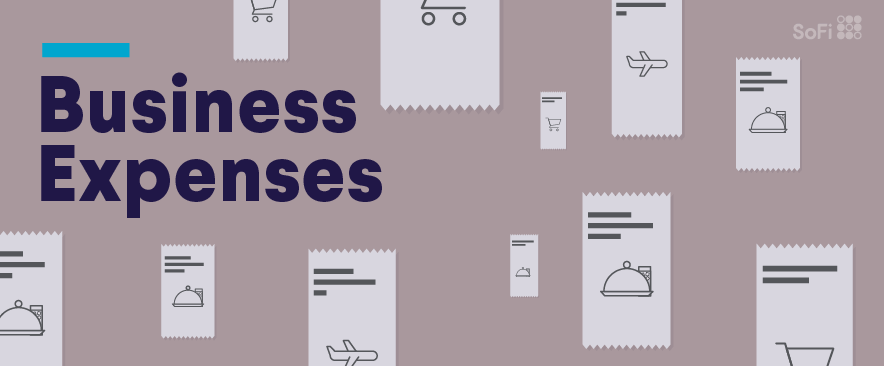Are Personal Loans Considered Income?
There may be times in your life when your car breaks or you get a surprise medical bill in the mail or you finally move forward with a home remodeling project. If you need help covering those costs, you might decide to take out a personal loan. But is money from the loan considered income and therefore subject to taxes?
The good news is, a personal loan is usually not considered income, though there are some exceptions that could impact borrowers during tax season. Let’s take a closer look.
Table of Contents
Does a Personal Loan Count as Income?
If you take out a personal loan, you may treat the funds the same as you would your paycheck. But as far as the IRS is concerned, any kind of formal loan from a bank or lender with terms that require repayment is considered a debt and is therefore typically not considered income. This distinction is important because it means you may not have to pay taxes on money you receive from a personal loan.
However, there may be tax implications on informal loans from friends and family. Before you enter into any agreement with a loved one, it’s a smart move to consult with an accountant.
Recommended: How to Pay Less Taxes: 9 Simple Steps
When Is a Personal Loan Considered Income?
While personal loans are generally not considered income and therefore taxable, there are exceptions that borrowers should know about.
If you take out a personal loan and then some or all of the loan debt is forgiven, the amount forgiven could be considered income. It might seem odd for canceled debt to be considered income, but think about it like this: Let’s say you made an extra $5,000 from work and used it to pay off your personal loan. That $5,000 would be considered income, and your loan would be paid off.
However, if you made no extra money but your $5,000 loan was canceled, then you would be in the same financial position in the end. So the IRS considers that forgiven loan debt taxable income.
Once a formal debt is forgiven or canceled, you should receive a Form 1099-C from the lender. According to the IRS, the amount of the canceled debt is taxable and must be reported on your tax return for the year.
There are some exceptions, such as certain qualifying student loan cancellations or personal loans canceled as part of bankruptcy hearings. And that’s where professional tax guidance might come in handy. Another thing to know is that the interest on personal loans is generally not tax-deductible.
What Exactly Is a Personal Loan?
As you’re exploring your options, it helps to understand what a personal loan is and how it works. A personal loan is one of many types of loans offered by banks, credit unions, and online lenders like SoFi. Personal loans typically range from $1,000 to $100,000, depending on the lender. There are both secured and unsecured personal loans. A secured personal loan means there is some sort of collateral to back the loan.
With an unsecured loan, there is no collateral. Generally, personal loans are unsecured. The terms of the loan—including things like interest rates, origination fees, and repayment schedules—are typically based on an applicant’s financial history, income, debt, and credit score. Because these types of loans aren’t tied to an asset, their interest rates can be higher than secured personal loans but are usually lower than credit cards or payday loans.
Exact eligibility requirements will vary by lender. The loans are then typically paid back with interest in monthly payments over a set schedule; typical repayment terms are extended over anywhere from 12 to 60 months.
Unlike a business loan or a home loan, an unsecured personal loan can be spent on a range of personal expenses, from home renovations to medical bills to consolidating credit card debt.
Applying for a Personal Loan
Over the past 12 months, 68% of Americans applied for a personal loan, according to a 2023 Forbes Advisor survey. And the average personal loan amount is $8,018.
If you’re thinking about a personal loan, consider starting with this checklist:
• Determine how much money you need.
• Explore all your financial options.
• Research various loans and lenders.
• Choose the type of loan you want.
• Compare interest rates.
If you decide a personal loan is right for you, the application process is relatively straightforward. You may be asked to submit paperwork, like a photo ID, proof of address, and proof of employment or income. Many lenders offer applicants the option to see if they pre-qualify for a loan, which can give them an idea of the rates and terms available to them.
If you’re planning to use a personal loan to pay off existing debt, you could also use SoFi’s personal loan calculator to compare payments and rates to see if an unsecured personal loan could potentially help you save money.
Recommended: Preapproval vs. Prequalify: What’s the Difference?
The Takeaway
A personal loan can provide borrowers with funds for a variety of purposes. Generally speaking, the money isn’t taxable and considered as income. However, there are some exceptions. For instance, if you take out a personal loan, and some or all of the balance is forgiven, the canceled debt could be considered income. There are both secured and unsecured personal loans; typically, personal loans are unsecured.
If you are thinking about taking out a loan to cover an unexpected or large expense, a SoFi unsecured personal loan could be a good option for your unique financial situation. SoFi personal loans offer competitive, fixed rates and a variety of terms. Checking your rate won’t affect your credit score, and it takes just one minute.
SoFi Loan Products
SoFi loans are originated by SoFi Bank, N.A., NMLS #696891 (Member FDIC). For additional product-specific legal and licensing information, see SoFi.com/legal. Equal Housing Lender.
Third-Party Brand Mentions: No brands, products, or companies mentioned are affiliated with SoFi, nor do they endorse or sponsor this article. Third-party trademarks referenced herein are property of their respective owners.
Non affiliation: SoFi isn’t affiliated with any of the companies highlighted in this article.
Financial Tips & Strategies: The tips provided on this website are of a general nature and do not take into account your specific objectives, financial situation, and needs. You should always consider their appropriateness given your own circumstances.
SOPL0523015









